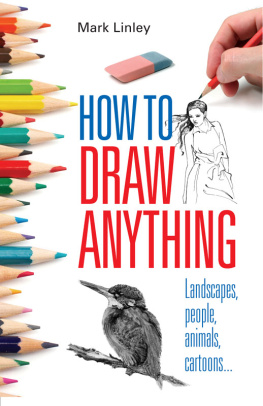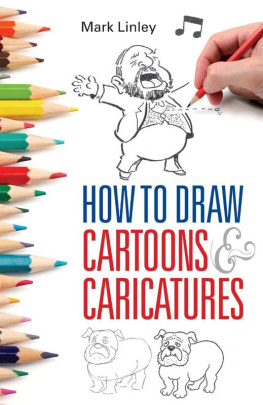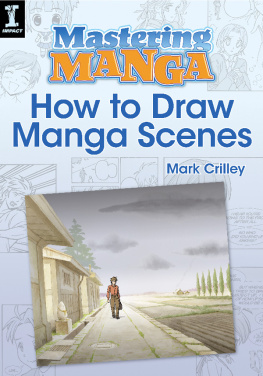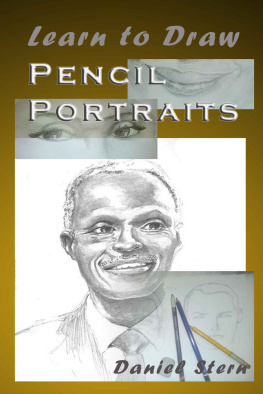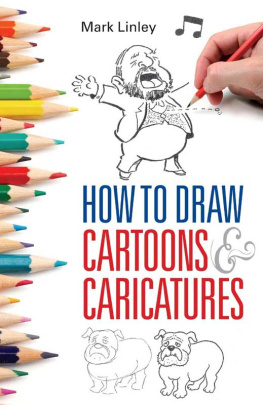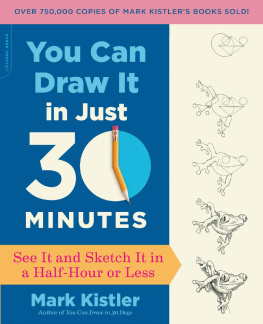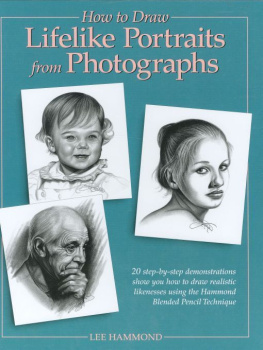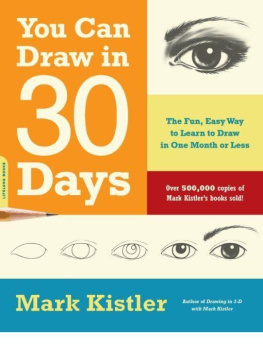How To
Draw
Anything
To Pat for her support.
How To
Draw
Anything
by
Mark Linley
Constable & Robinson Ltd
3 The Lanchesters
162 Fulham Palace Road
London W6 9ER
www.constablerobinson.com
First published in the UK 1995
Material in this book has been drawn from The Right Way to Draw, The Right Way to Draw People, The Right Way to Draw Landscapes, The Right Way to Draw Animals and The Right Way to Draw Cartoons.
This edition published by Right Way, an imprint of Constable & Robinson, 2010
Copyright Mark Linley, 1995, 2010
All rights reserved. This book is sold subject to the condition that it shall not, by way of trade or otherwise, be lent, re-sold, hired out or otherwise circulated in any form of binding or cover other than that in which it is published and without a similar condition including this condition being imposed on the subsequent purchaser.
A copy of the British Library Cataloguing in Publication Data is available from the British Library
ISBN: 978-0-7160-2223-7
Printed and bound in the EU
1 3 5 7 9 10 8 6 4 2
Contents
1
You Can Learn To Draw
Yes, you really can! Many people think that learning to draw is difficult if not impossible. In fact, it need not be. If would-be artists treated the subject as fun and went about it in the right way, it could be possible for nearly everyone, like learning to drive. At first it may seem hard, but it isnt if the basic instruction is correct.
Once you have discovered how to draw landscapes, animals, people, cartoons and all the other things in this book, you should have no problem at all managing with any subject.
Expect mistakes
When tackling any new skill it is common sense to expect and accept that lots of mistakes will be made. Its part of the learning process. It is not unusual for students with no previous experience of draughtsmanship suddenly to discover that they can put down accurately what they see. It requires just three things for this to happen:
1. The ability to look properly
2. Self-confidence
3. The capacity to remember and carry out basic instructions.
You have the touch
I have not mentioned skill with pencil, pen or brush. The reason is because all who can write their names, already have sufficient touch and control to make a multitude of complex shapes called the English alphabet. There are no harder lines, in nature, to record.
A semi-illiterate navvy with scarred, calloused, insensitive hands and a tendency to drink too many pints might start off at a disadvantage. But there are talented handicapped artists with no fingers who can draw; some use their feet, or mouths.
Think positive
Folks who learn quickly are often those who have enthusiasm for their subject and self-confidence. The way we think is vitally important to the way we operate. Many of us are brain-washed from childhood into thinking negatively about some things. We have all heard others say, for example, I cant draw a straight line. When this is thought or said it becomes a command to the human computer, the sub-conscious mind, which then obeys the instruction by programming the individual to this end. I cant is then a barrier for as long as it is thought.
Think negatively and you will be programmed to do exactly what you have thought. You will never be able to control a pencil or pen well enough to put down the lines you see. You wont be able to observe shapes accurately, or define texture, and, of course, it will be your own fault.
Fig. 1 Yes, you really can learn to draw!
You have bought this book, so you are probably already a positive thinker; if not, you will be from now on. How do you do this? Very easy, just think and say, I can learn to do anything then forget about it. How long will it take? About a tenth of a split second or faster. Whats more you can apply this simple rule to any subject for the rest of your life. You will have no barrier to stop you moving forward. It may encourage you to know that I am a self-taught artist.
Gifted?
I believe the term gifted is too lightly used in respect of artists. Only one in every million or so can be truly said to be gifted. The rest of us are craftsmen with different degrees of skill. If you can write your name then you have enough touch to learn to draw. If asked to write an A, G, R or K you could do it without thinking. Well, within these pages you will not be called upon to draw anything harder than that. Most lines in nature are gently curved, wavy, or straight; even those that appear complicated at first are not if examined closely.
This is why it is vitally important for us artists to look properly at what we want to record. If our drawing goes wrong it is always because our looking was at fault, If, for example, you draw your spouse with a broken nose, cauliflower ears and crossed eyes when in fact the features are more or less normal, then your viewing is wrong or your humour wicked. If your sketch of the family moggy turns out to resemble a furry crocodile then you havent focused correctly, or need glasses.
Looking properly is important and will be touched upon again, frequently, later in the book.
2
Start With Landscapes
All the drawings you do from this book should be bigger than the printed version.
What to use
Black-and-white drawings have a special charm and power. Indeed, before colour printing was invented, most illustrations were in this medium. Black ink and various nibs used to be common, but today artists use ready-made pens. All the drawings in this book were done with them. There is a huge range to choose from. I find that a small selection of pens, graded 0.1, 0.5, and 0.7, is more than adequate for most illustrations, and suggest that you purchase the same. shows examples of the widths of line these different sized pens produce. Despite being throw away pens they are made to give long service. One pen will contain enough black ink to make dozens of drawings. And they are not expensive.
Fig. 3 Drawing pens.
Fig. 4 Different line thicknesses.
A soft eraser is necessary. The person who makes no mistakes makes nothing!
Drawing pencils, graded 2B and 4B, are ideal for sketches. A size A4 cartridge drawing pad, or good quality typing paper which is cheaper to buy by the ream should enable you to get going. After you have gained a little experience you could add a small paint brush (number 3, 4 or 5) and a bottle of black drawing ink for blocking in large areas.

